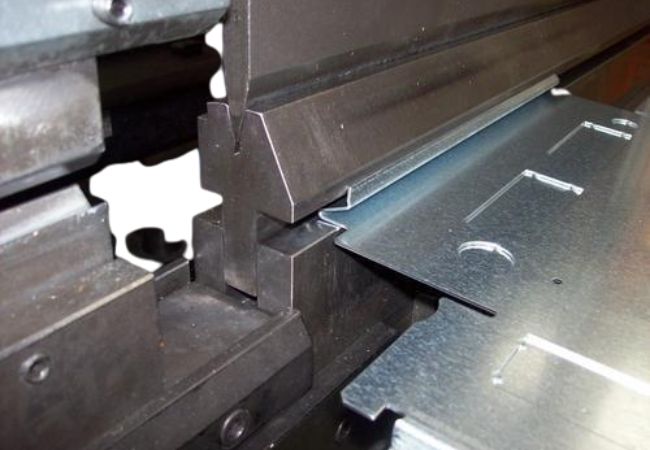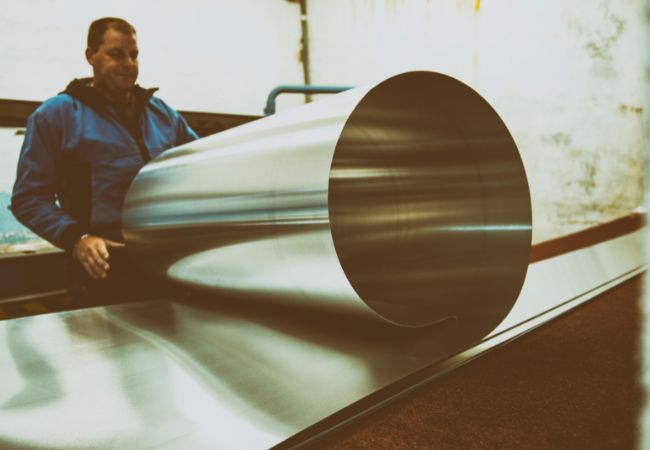
If you want to be a professional in stainless steel sheet metal fabrication, then here is the comprehensive resource you need.
From choosing stainless steel grade, cutting, forming, assembling, and applying surface finish to quality inspection – this guide compiles all useful information on stainless steel fabrication.
Let’s get started.
What Is Stainless Steel Sheet Metal Fabrication?
Stainless steel fabrication is a process where you transform a metal sheet into useful products. For example, making electrical enclosures, cabinets, or doors from sheet metal.
Depending on the stainless steel parts you wish to make, steel fabrication can be a single or more processes.
You will learn more about various sheet metal fabrication techniques shortly.
Benefits of Stainless Steel For Sheet Metal Fabrication
Austenitic is popular in metal fabrication due to:
- It’s ductility
- Excellent corrosion resistance
- Excellent formability
- Superior mechanical properties
- Ease of welding
- Versatility makes it perfect for a range of applications
- Low maintenance
- Ability to withstand high temperatures
- Suitable for hygiene applications

Choosing Stainless Steel Material For Metal Fabrication
There are many stainless steel metal grades. However, the 300 series are the most common stainless steel sheet metal for fabrication.
You can also refer to them as austenitic stainless steel.
Some of the most common stainless steel grades include:
Stainless Steel 301: It has low chromium and nickel content. However, the level of carbon is slightly higher than 304.
SS 301 is affordable and a perfect choice for structural steel fabrications.
Stainless steel 304: It is popular for most custom stainless steel sheet fabrication due to excellent formability and corrosion resistance. SS 304 is the best for sheet metal parts such as cabinets, enclosures, tanks, etc.
Stainless steel 316: Molybdenum in stainless steel 316 improves corrosion resistance. It is a perfect choice for high-corrosion environments like marine equipment, reactor tanks, or chemical containers.
Let’s summarize other vital mechanical properties in the table below:
| 301 Stainless Steel | 304 Stainless Steel | 316 Stainless Steel | |
| Tensile strength (Mpa) | 205 | 215 | 290 |
| Shear Modulus (Gpa) | 74 | 77 | 74 |
| Elongation at break (%) | 40 | 70 | 50 |
| Hardness (Brinell) | 217 | 123 | 217 |
| Density (g/cm3) | 8.03 | 8 | 8 |
Apart from Austenitic for sheet metal fabrication, you may also consider:
Martensitic stainless steel: although they are suitable for fabrication, they are prone to cracking during welding. As a result, heat treatment is important.
Duplex stainless steel: This stainless steel is known for weld efficiency, especially the 2205 grade.
Ferritic stainless steel: fabricating this stainless steel is a challenge due to the following:
- Improving ductility and grain growth requires austenitic fillers
- Only stabilized grades like 409 can be welded
More resources:
Processes In Stainless Steel Sheet Metal Fabrication
There are many stainless steel sheet fabrication techniques and methods. Therefore, you will choose the sheet metal fabrication process depending on the design of the stainless steel parts.
Generally, all the processes are classified as:
- Cutting stainless steel sheet metal
- Forming stainless steel sheet metal
- Assembling stainless steel sheet metal parts
- Applying surface finish on stainless steel metal parts
Since the scope of this guide is limited, it will not focus on the individual steps in detail. However, there will be useful links and resources for each process.
Let’s explore the stainless steel metal fabrication process:
1. Stainless Steel Cutting

In stainless steel sheet cutting, you will use an appropriate tool to separate a section of metal from the larger sheet.
Some of the most common processes include:
- Cutting without applying shearing force; the most common techniques here include Waterjet cutting, plasma cutting, and laser cutting.
More Resources:
- Cutting using shearing force: some of the most common techniques here are punching, sawing, notching, perforating, piercing, and blanking.
More Resources:
Blanking And Piercing Sheet Metal
2. Forming Stainless Steel

In the stainless steel forming process, you will use a suitable technique to shape or deform the sheet metal.
Depending on the configuration of the parts you want, these stainless steel metal forming techniques are handy:
- Bending stainless steel sheet metal; some of the main techniques include V-bending, U-bending, wipe bending, and roll bending
- Hemming
- Stamping
- Roll forming
- Spinning
- Curling
- Deep drawing
More Resources:
Hemming And Seaming Sheet Metal
3. Stainless Steel Parts Assembly

After forming stainless steel parts, it is now time to assemble them. Again, there are many types of stainless steel assembly processes.
It will depend on your design requirements. Some of the most common assembly processes include:
- Stainless steel sheet welding
- Riveting stainless steel sheet metal
- Using fasteners such as screws, bolts, and nuts
- Soldering and brazing
- Tongue and groove assembly
- Bonding stainless steel parts
- Using snap fits
- Hemming
Therefore, you should choose a suitable technique depending on the fabricated stainless steel metal part requirement.
More Resources:
11 Sheet Metal Assembly Techniques
Types Of Rivets For Sheet Metal
Welding Vs. Brazing Vs. Soldering
4. Common Stainless Steel Parts Surface Finish
Once you assemble fabricate stainless steel parts, applying the right surface finish improves quality and aesthetics.
The type of stainless steel surface finish will depend on the specific requirements of your parts. You can choose any of the following:
- Hairline surface finish
- Painting
- Mill finished
- Polished surface
- Brushed surface
- Bead blasted surface
- Painted finishes
Of course, you may also go for decorative finishes.
More Resources:
Stainless Steel Surface Finishes
Don’t forget, by the end of this process, you must inspect the quality of the final stainless steel sheet metal. It should meet the exact specification of the client. At the same time, it should conform to the stipulated quality standards.
Reducing Cost During Stainless Steel Sheet Metal Fabrication
Achieving low-cost sheet metal fabrication is the ultimate goal of every stainless steel sheet metal part manufacturer. It is a sure way to remain a competitive market.
Here are some practical measures:
1. Consider China Stainless Steel Sheet Metal Fabrication
Today, metal fabrication companies in China offer a cost-effective, and reliable solution in the industry. Adopting new metal fabrication technologies, coupled with continuous R&D gives Chinese companies the upper hand in the industry.
Even for the OEM stainless steel metal fabrication services, you will still get value for your money. The companies help in design, fabrication to stainless steel part testing, and certification.
A reason why you can count on KDM Fabrication.
2. Choose The Right Stainless Steel Alloy
You must choose stainless steel alloy which suits the intended application. It is important to consider specific use, environments, chemical compatibility, etc.
Take, for example, SS 304 has better corrosion resistance than SS 301. Again, SS 301 is cheaper than SS 304.
Therefore, for applications that do not require a corrosion-resistant metal, SS 301 will be a better alternative.
3. Consider Design For Manufacturing (DFM)
DFM will help you adopt efficient and cost-effective fabricated stainless steel parts. Additionally, it will help avoid possible flows during the manufacturing process.
Your stainless steel sheet metal fabricator will help you follow the correct principles.
4. Make Fabricated Stainless Steel Parts Prototypes
With a prototype, you will test the fabricated stainless steel parts before mass production. During this stage, you can make the necessary adjustments to your design.
In a nutshell, with these in mind, you can reduce the cost of sheet metal parts fabrications.
More Resources:
Sheet Metal Designs Guidelines




